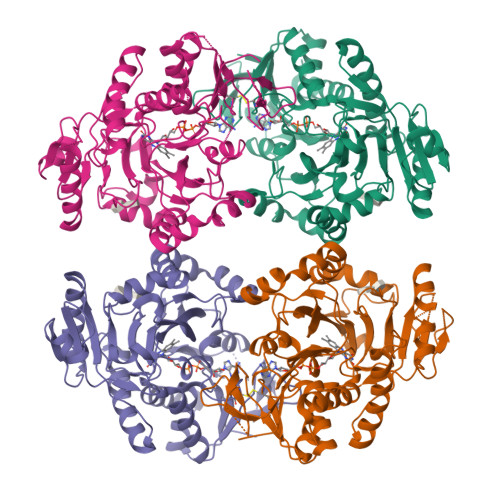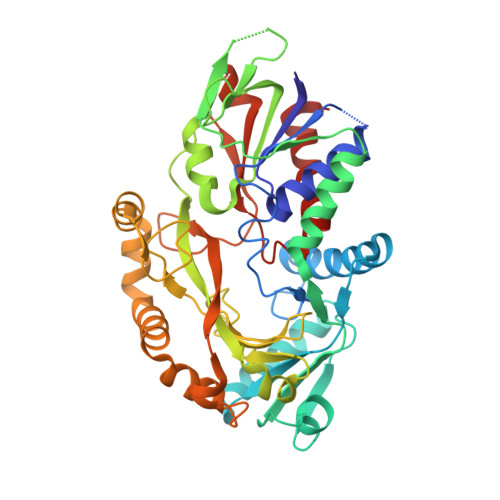Structure and biochemical characterization of l-2-hydroxyglutarate dehydrogenase and its role in the pathogenesis of l-2-hydroxyglutaric aciduria.
Yang, J., Chen, X., Jin, S., Ding, J.(2023) J Biological Chem 300: 105491-105491
- PubMed: 37995940
- DOI: https://doi.org/10.1016/j.jbc.2023.105491
- Primary Citation of Related Structures:
8W75, 8W78, 8W7F - PubMed Abstract:
l-2-hydroxyglutarate dehydrogenase (L2HGDH) is a mitochondrial membrane-associated metabolic enzyme, which catalyzes the oxidation of l-2-hydroxyglutarate (l-2-HG) to 2-oxoglutarate (2-OG). Mutations in human L2HGDH lead to abnormal accumulation of l-2-HG, which causes a neurometabolic disorder named l-2-hydroxyglutaric aciduria (l-2-HGA). Here, we report the crystal structures of Drosophila melanogaster L2HGDH (dmL2HGDH) in FAD-bound form and in complex with FAD and 2-OG and show that dmL2HGDH exhibits high activity and substrate specificity for l-2-HG. dmL2HGDH consists of an FAD-binding domain and a substrate-binding domain, and the active site is located at the interface of the two domains with 2-OG binding to the re-face of the isoalloxazine moiety of FAD. Mutagenesis and activity assay confirmed the functional roles of key residues involved in the substrate binding and catalytic reaction and showed that most of the mutations of dmL2HGDH equivalent to l-2-HGA-associated mutations of human L2HGDH led to complete loss of the activity. The structural and biochemical data together reveal the molecular basis for the substrate specificity and catalytic mechanism of L2HGDH and provide insights into the functional roles of human L2HGDH mutations in the pathogeneses of l-2-HGA.
Organizational Affiliation:
State Key Laboratory of Molecular Biology, Shanghai Institute of Biochemistry and Cell Biology, Center for Excellence in Molecular Cell Science, Chinese Academy of Sciences, University of Chinese Academy of Sciences, Shanghai, China.


















